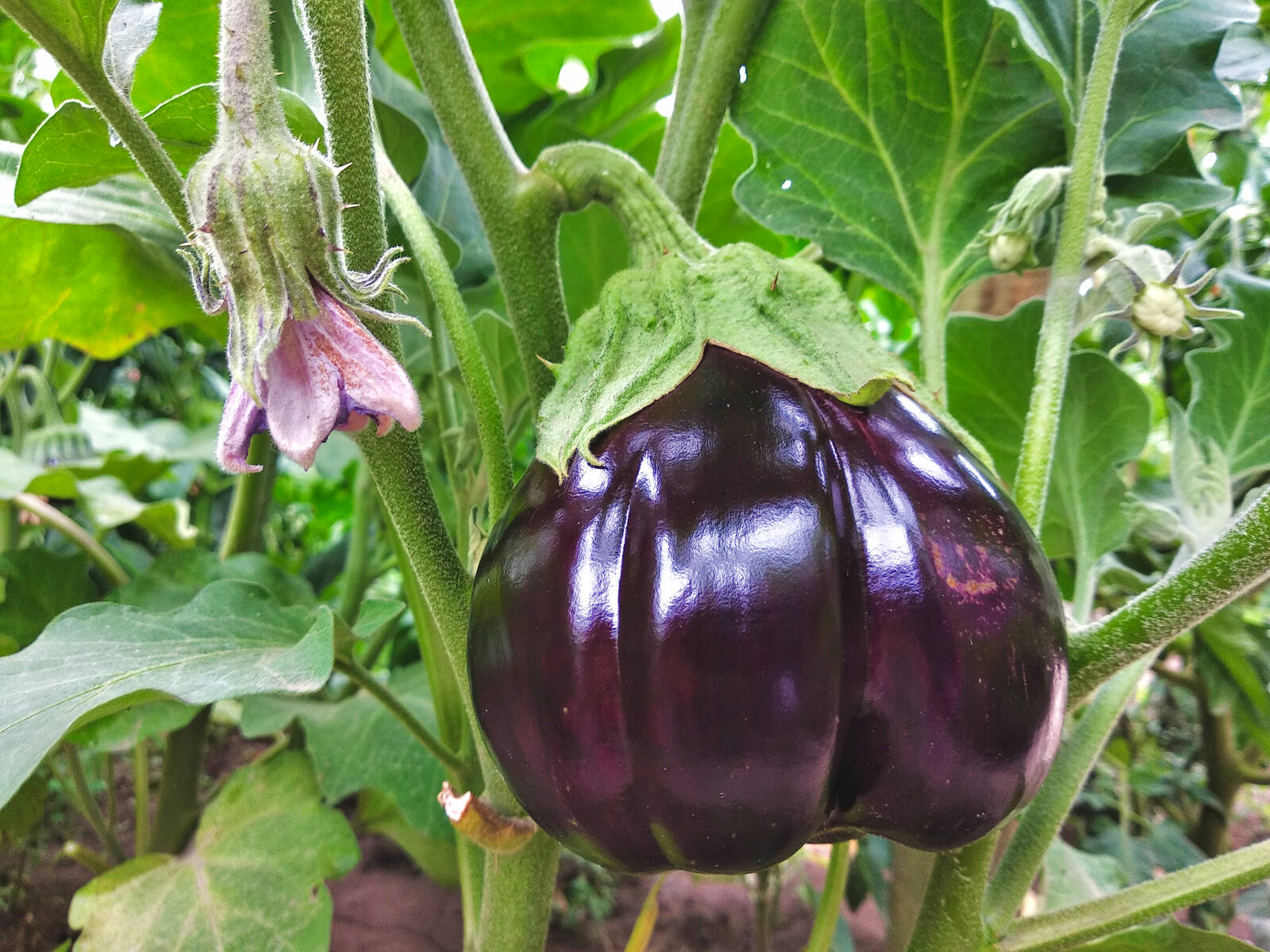
Eggplant: Good & Bad Companion Plants + Planting Plan
Alongside peppers and tomatoes, aubergines are a popular nightshade plant for the vegetable garden. As with all plants, you should also consider the likes and dislikes of the aubergine (also known as eggplant or melanzani) for planting partners. In this article, you will find out which plants are companion plants and antagonistic plants for aubergines and what a planting plan for growing aubergines in companion planting might look like.
This Article Contains:
- Planting Melanzani/Aubergine in Companion Planting
- Companion Plants for Eggplants
- Bad Companion Plants for Eggplant
- Companion Planting With Herbs
- Companion Planting Table: Companion Plants
- Succession Cropping & Crop Rotation With Eggplants
- What Goes Well With Aubergine: Planting Plans With Eggplant
- Planting Plan: Eggplant in the Garden/Raised Bed
- Aubergine in the Greenhouse
- More Examples for Your Planting Plan With Eggplants
- Frequently Asked Questions: Companion Planting With Eggplants
Quick Overview
Eggplant: Companion Plants
- Companion plants:
- beans, lettuce, spinach, radishes, cabbage, basil, turnip, Jerusalem artichoke, marigolds, tarragon, thyme
- Antagonistic plants:
- tomatoes, peppers, potatoes, peas, beet, pumpkin, zucchinis, cucumber, raspberries, sunflowers
Succession Cropping & Crop Rotation
- Good precultures:
- lettuce & radishes
- Good subsequent crops:
- spinach, garlic, winter lettuce, green manure (e.g. mustard, clover)
Planting Melanzani/Aubergine in Companion Planting
Choosing the right plant companions for growing aubergines in the garden will help you to promote healthy and vigorous growth of your plants. This will improve the soil quality and reduce the occurrence of diseases and pests. Depending on the combination, certain vegetables and herbs help to keep pests away from your plants and attract beneficial insects. As a result, you will have a richer harvest and healthier fruit at the end of the season.
Companion Plants for Eggplants
Companion plants support the development of your eggplant and help to keep diseases and pests at bay. They complement each other in terms of growth, allowing you to make optimum use of the space in the bed. A mixture of heavy and light feeders helps to maintain good soil health. Beans, for example, bind nitrogen in the soil and provide your eggplant with additional nutrients. Light feeders such as radishes, spinach and lettuce are also good companions for eggplant. Cabbages complement the eggplant well in growth and have similar good companions. Like tomatoes, eggplants can also help to keep whitefly away from your cabbage plants.
Companion Plants for Aubergines Include
- various types of cabbage (cauliflower, broccoli, kohlrabi, kale, ...)
- beans bind nitrogen in the soil and support the eggplant as a heavy feeder in the absorption of nutrients
- radishes, spinach & lettuce are light feeders and complement the bed well
- turnips & jerusalem artichokes
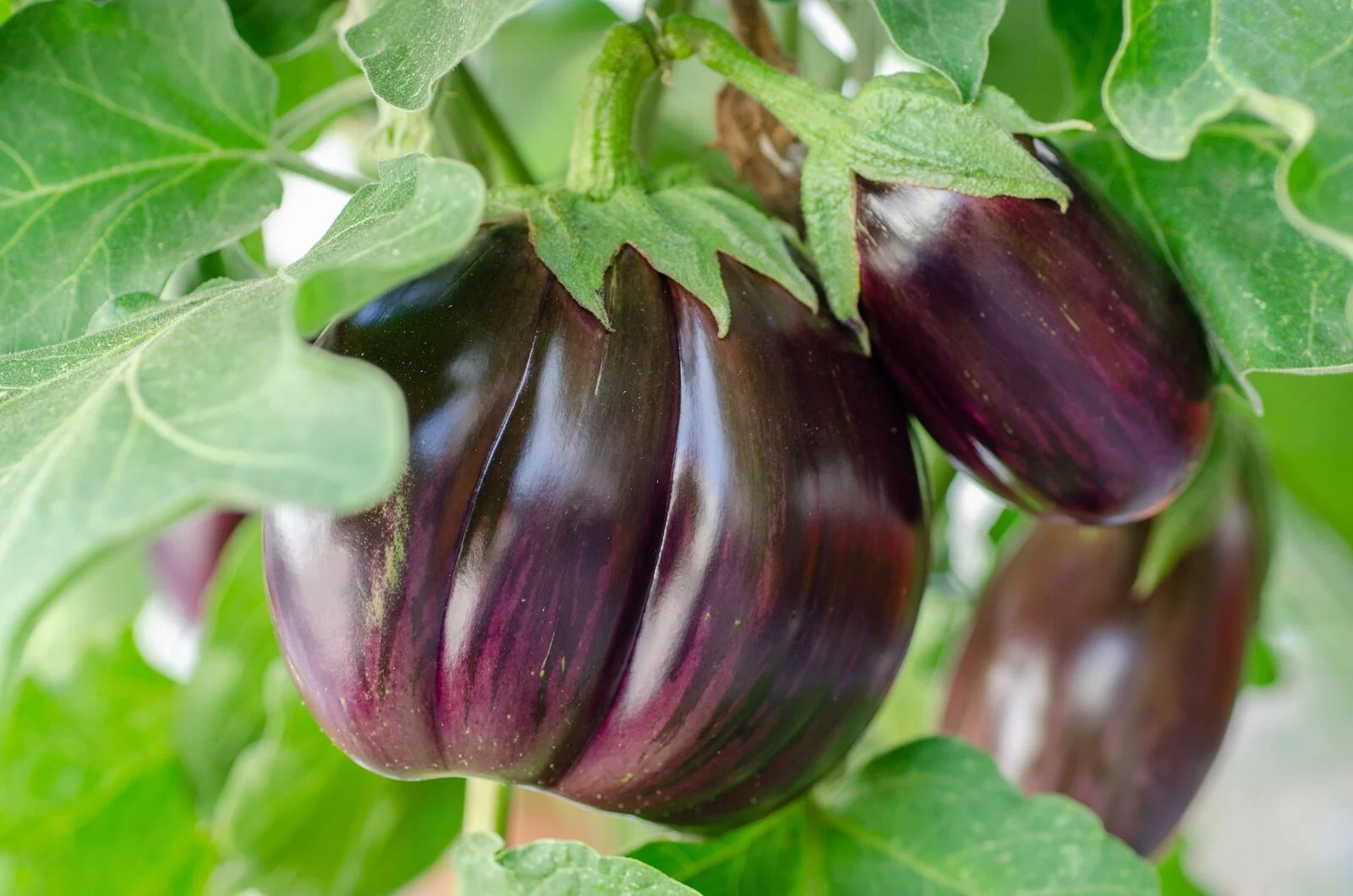
Bad Companion Plants for Eggplant
Especially other nightshade plants such as tomatoes, potatoes and peppers should not be planted in the immediate vicinity of aubergines. The same diseases and pests often occur in the same plant family. In the case of shade plants, these are often mildew, aphids and botrytis. If the plants are also in close proximity, it is easier for diseases and pests to spread to companion plants. Peas and beet also do not get on well with aubergines and should not be grown together in a bed.
Peas and Aubergines as Companion Plants?
Unfortunately, aubergines and peas do not get along well in the vegetable patch. This is due to their growth habit. Aubergines and peas are very similar both in terms of root development and growth above the ground. As a result, they compete for light and space. This puts them at odds with each other and they are best not planted directly next to each other.
Planting Aubergine and Tomatoes Together?
As mentioned above, aubergines and tomatoes belong to the same nightshade plant family. As a result, the same diseases and pests often occur in both vegetables. It is therefore not advisable to grow them next to each other in a bed or greenhouse, as diseases and pests are quickly passed on from plant to plant.
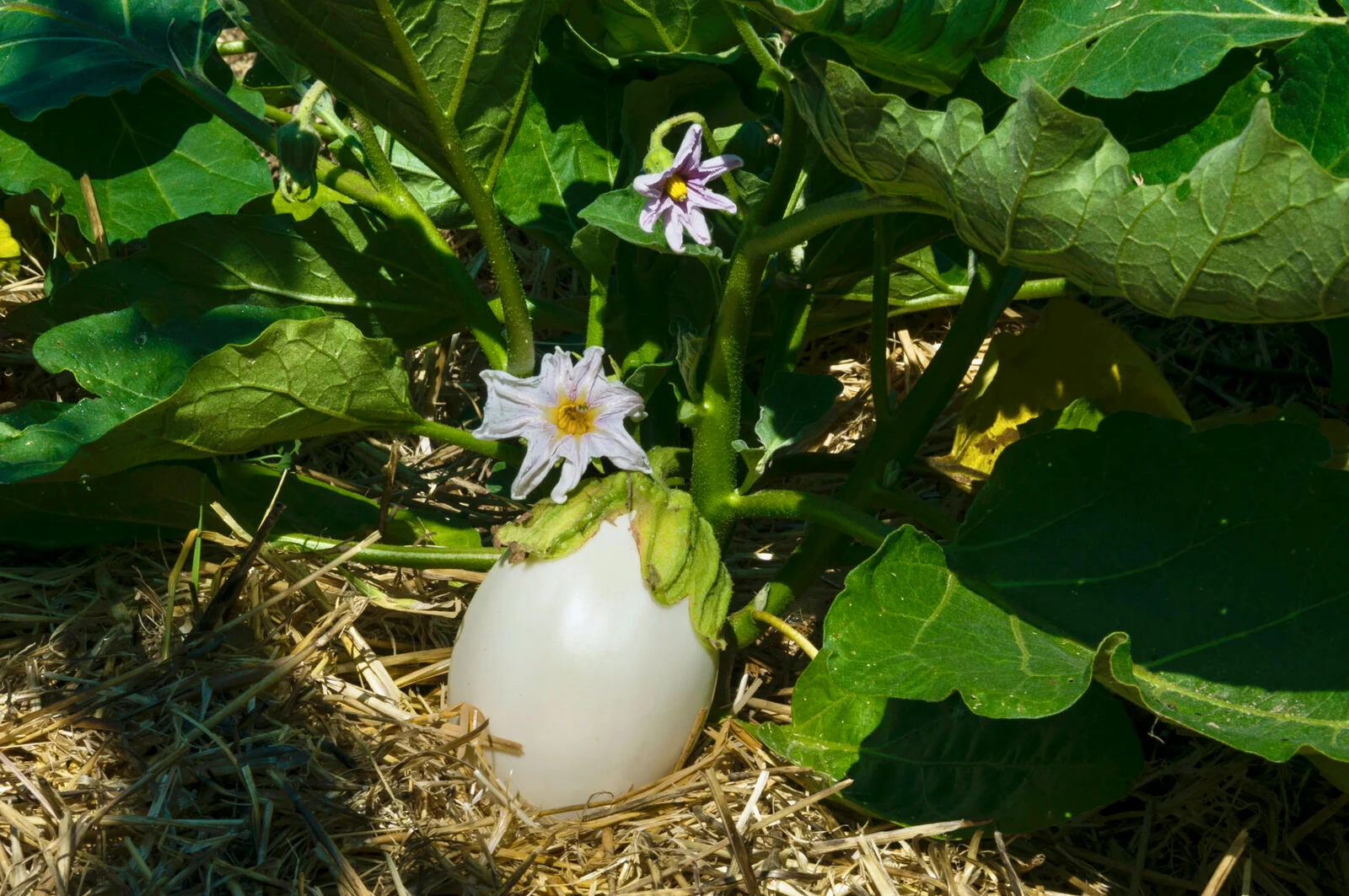
Eggplant and Cucumber as Companion Plants?
Aubergine and cucumber are both heavy feeders and take nutrients from each other in the bed. The cucumber is also strongly climbing and vigorous. However, as the aubergine grows very slowly, it can be prevented from growing by a neighboring cucumber as it does not have enough space or light. Both vegetables are also often affected by mildew, which can lead to infestation of both species if they grow next to each other. Particularly in a bed where mildew has already occurred on plants, you should make sure there is sufficient space. If this is not the case and you have applied sufficient compost to the bed in the fall and spring, there is no reason for the plants to grow next to each other.
Planting Aubergines Next to Zucchini?
Zucchinis and other pumpkins behave in a similar way to cucumbers. These are also heavy feeders and, like aubergines, require a lot of nutrients in the soil. If they grow next to each other, both may not receive enough nutrients. Zucchinis and pumpkins are also inferior to eggplants in terms of growth, as they are also strongly climbing and sprawling and take up space from the slow-growing aubergine. Zucchinis and pumpkins are also at great risk of mildew. Neighboring aubergines should therefore only be planned in beds that have not previously been infested.

Need Help to Plan a Mixed Crop?
With our digital bed planner, you can easily plan a diverse mixed crop with eggplants. Companion plants are displayed directly and you get tips on succession planting and crop rotation!
Plan Your Bed NowCompanion Planting With Herbs
Basil is particularly suitable for companion planting with aubergine, as it has the same soil, nutrient and watering requirements as aubergine. Basil and aubergine also complement each other well in terms of growth. The space in the bed is thus optimally utilized. Its fragrance also keeps pests and diseases such as mildew and whitefly at bay. At the same time, it attracts pollinators and thus promotes the formation of fruit. As a result, it promotes the yield and the aroma of the fruit is also said to be improved by basil.
Other good herbs for mixed cultivation with eggplant are thyme, marigold (but not in combination with beans, as these two do not get along so well), marigold and tarragon. Marigolds and marigolds are popular partners in the vegetable patch as they contribute to soil health. Marigolds also keep nematodes away. Tarragon should always be grown in a sunny spot, as otherwise it can be attacked by aphids or mildew, which also damage the eggplant. Thyme, on the other hand, protects against infestation by aphids, slugs or cabbage white butterflies. This is particularly useful in companion planting with cabbage varieties.

Companion Planting Table: Companion Plants
Here you will find all the companion plants and antagonistic plants of the aubergine listed in a table:
| Companion Plants | Antagonistic Plants |
|---|---|
| beans | tomatoes |
| lettuce | paprika |
| spinach | potatoes |
| cabbages (cauliflower, broccoli, kohlrabi, kale, ...) | beetroot |
| turnips | peas |
| jerusalem artichoke | pumpkin |
| basil | cucumber |
| thyme | zucchini |
| tarragon | raspberries |
| marigold | sunflower |
Succession Cropping & Crop Rotation With Eggplants
Succession Cropping
Aubergines are thermophilic plants and do not tolerate frost. You should therefore only plant them out in the open after the last frosts - which is usually after the Ice Saints in mid-May. Until then, the space in the bed is still free. You can therefore grow fast-growing plants such as lettuce and radishes as a pre-crop. In the fall, it is then too cold for aubergines and the space is free for a subsequent crop of hardy plants such as spinach, winter lettuce, garlic and green manure (e.g. mustard or clover).
Aubergines are perennial plants in their native habitat. If you grow aubergine in a greenhouse or pot, you can even overwinter your plant if necessary. You can find out more about how to overwinter aubergines and general information about growing aubergines in our article Planting Eggplants.
Crop Rotation
Like all crops, eggplants should not be grown in the same place every year, as diseases and pests can quickly colonize the soil. For this reason, you should ideally not grow egg plants or other nightshade plants in a bed for 3-4 years after growing them there. Green manuring between the years helps to enrich the soil with nutrients again after growing heavy feeders such as eggplant. Beans, peas, mustard, clover or other nitrogen-fixing plants are suitable for this.
What Goes Well With Aubergine: Planting Plans With Eggplant
In the next two sections, you will find a planting plan for companion planting with aubergine for the garden/raised bed and for the greenhouse. When creating a companion planting plan, you should pay attention to companion plants and antagonistic plants. Companion plants should be next to each other, as they complement each other in terms of space and nutrient requirements while protecting each other from diseases and pests. Antagonistic plants should be sufficiently distant from each other so that there are a few plants between them.
Planting Plan: Eggplant in the Garden/Raised Bed
Here we show you what a planting plan for companion planting with aubergine could look like for your garden or raised bed. The bed is 1 x 2 m/1.1 x 2.2 yd in size. There is an aubergine plant in the middle, surrounded by 6 basil plants. These keep pests away with their scent and attract beneficial insects at the same time. Next to it are 4 rows of bush beans. These complement the heavy feeders aubergine, kohlrabi and cauliflower with their nitrogen-fixing properties. A coriander plant between the cauliflowers completes the mixed crop.
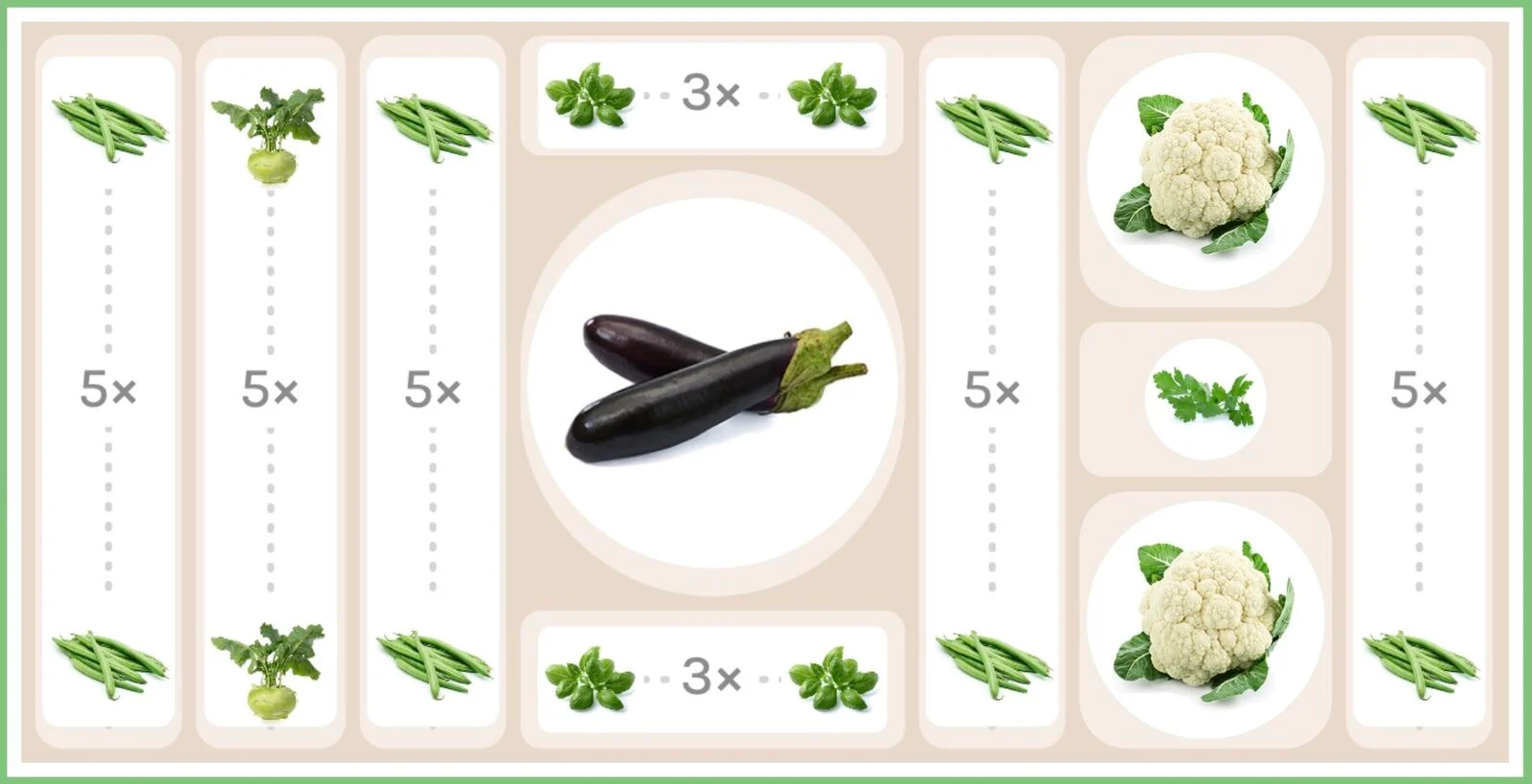
Aubergine in the Greenhouse
Here we show you what a planting plan for companion planting with aubergine could look like for your greenhouse. The 2 beds are 1 m/1.1 yd x 3 m/3.3 yd each. There is a 25 cm/9.8 in wide path between them. In this planting plan, you will find 3 aubergine plants, 1 cucumber, 2 peppers and 3 tomato plants as the main crops. These are complemented by a few herbs such as basil, parsley, oregano, coriander and dill, which harmonize well with the vegetable plants and attract beneficial insects. Bush beans and lettuce complement the heavy feeders aubergine, cucumber, bell pepper and tomato. 4 celery plants and 4 kohlrabi round off the mixed crop.
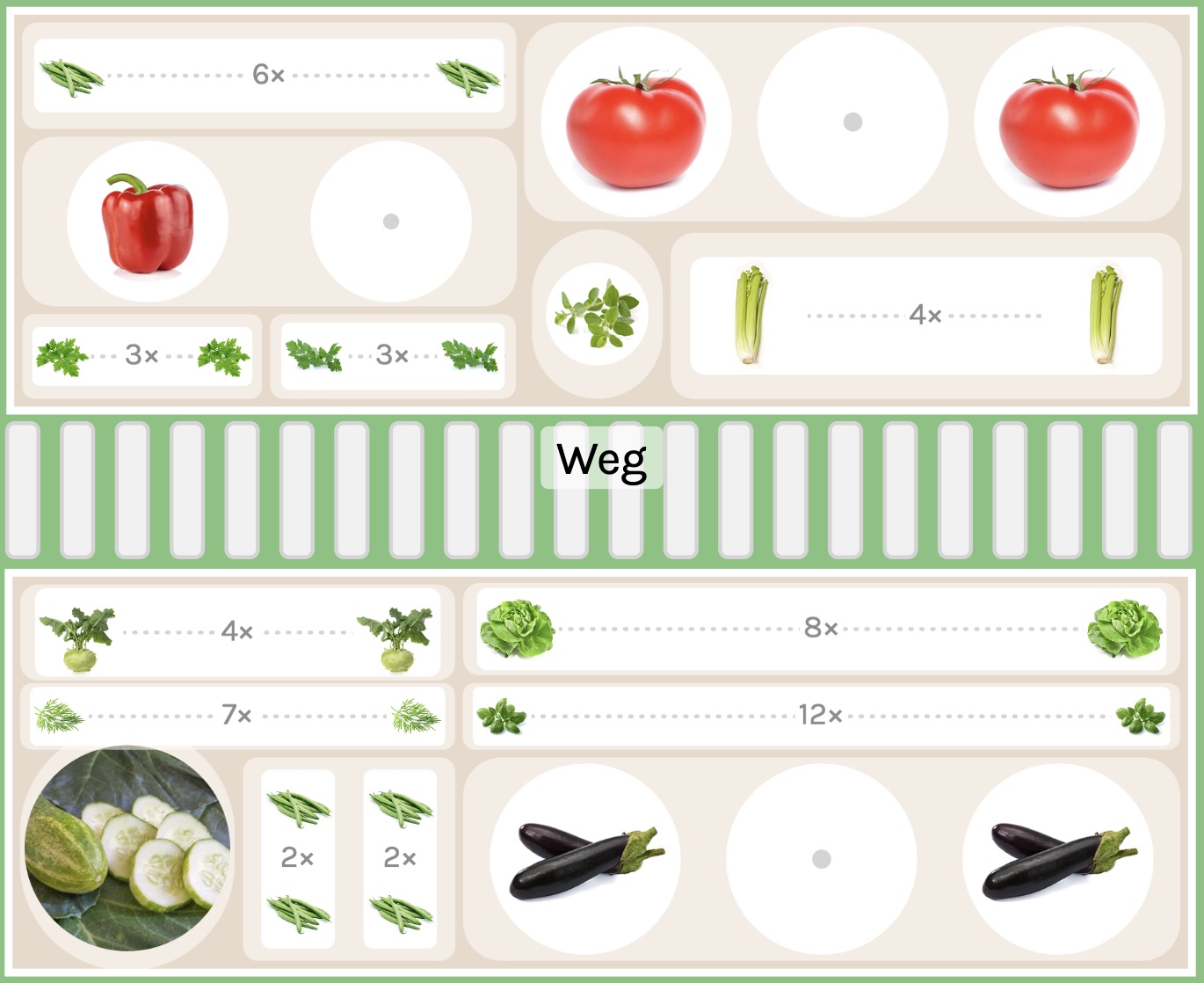
More Examples for Your Planting Plan With Eggplants
If you have any questions or comments, please write to us at [email protected].
Would you like to receive helpful gardening tips all year round and plan your own beds optimally? Then register here or download the Fryd app for Android or iOS.
Fryd - your digital bed planner
Cover image by Anna Evans on Unsplash.

Marielena
Marielena studies agricultural and environmental sciences. She gardens at home and at an allotment and likes to try out new things.
Learn MoreCurrent Topics in the Community

We had an olive tree ... when it didn't survive a harsh winter, my husband and our children turned it into this sculpture - a real #heart element in our garden. We planted a rambler rose on the second olive tree, which enchants us every year with its white flowers. It looks as if it were a flowering rose bush ....

Liked 5 times
May I introduce: my roommates Max (left) and Moritz. Max is a "sweet starter", which I used for the panettone and I can say it's much better than the store-bought one! The baguette (ok I still have to work on the perfect shape 🤣) with yeast only. The Moritz is a rye sourdough and is used for Vintschgauer.

Hello lovelies I am new to gardening What recommendations do you have for buying seeds? Or which stores can you recommend? I'm planning to start with the classics Onions, potatoes, garlic, carrots, herbs, lettuce, tomatoes, peas, beet and pumpkin
Show 3 answersPopular Articles

Overwintering Parsley: How to Do It Successfully

How to Grow Lettuce in Winter: Varieties, Sowing, Harvesting

Growing Sage Plant: Tips for Sowing and Harvesting

What Herbs Can Be Planted Together?

Create & Design a Permaculture Garden

Overwintering Plants: Tubs, Pots and Raised Beds

Pruning, Fertilizing & Propagating Currants: Care Tips

Pruning Raspberries: How to Do It

Vegetable Garden With Greenhouse: How to Use Greenhouse Effect

Winterizing Beds and the Garden: How to Do It
FAQ
What can you plant together with eggplant?
Beans, lettuce, spinach, radishes and cabbages such as broccoli, cauliflower and kohlrabi go well with eggplant. Basil also goes well with eggplants.
What should you not plant next to eggplant?
You should not plant any other nightshade plants next to eggplants. So no tomatoes, peppers or potatoes. Peas, beet, pumpkin, zucchini and cucumber also don't get on so well with eggplants.
Can you plant tomatoes and eggplants together?
Tomatoes and eggplants should not be planted directly together as they belong to the same plant family. As a result, they often suffer from the same diseases and pests. If they are planted next to each other in the bed, these can easily spread to the other plants.
Are cucumbers and eggplants good companions?
Cucumbers are not good neighbors for eggplants. Cucumbers proliferate in the bed. This takes up important space in the bed for the slow-growing eggplant. In addition, both plants are heavy feeders and take away important nutrients from each other's soil.
Can you plant zucchinis and eggplants together?
Zucchinis and eggplants should also not be planted directly together. Like cucumbers, zucchinis are vigorous plants and heavy feeders. Here, too, there is competition for space and nutrients. The plants therefore hinder each other's growth.